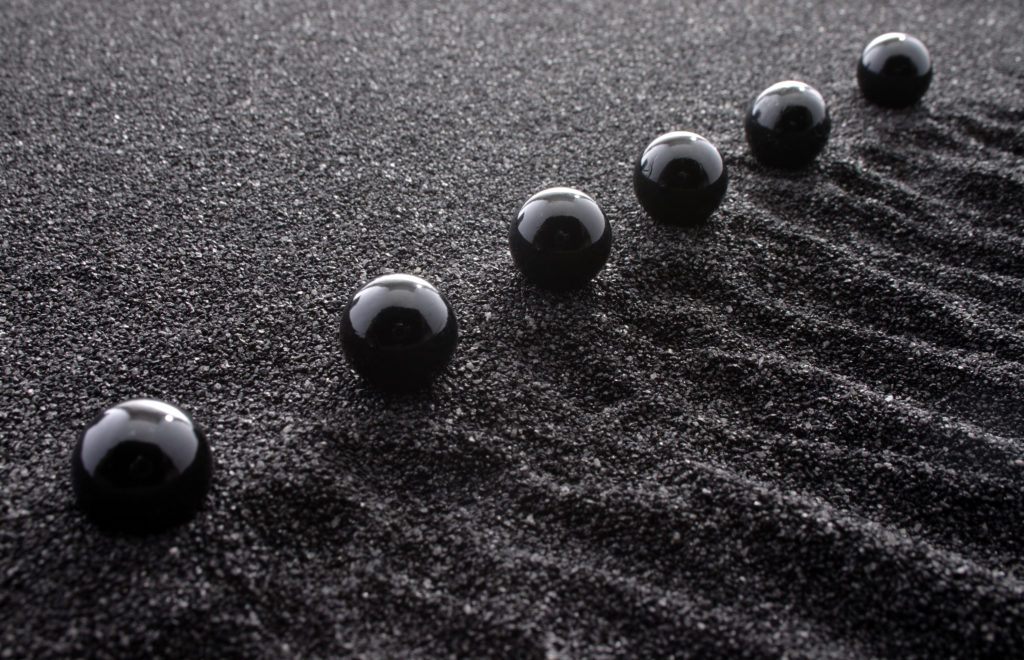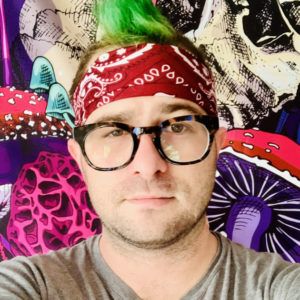
Of Mushrooms, Marbles, Mice, and Men
For people with obsessive-compulsive disorder (OCD), intrusive thoughts generate anxiety that only subsides following completion of a repetitive behavioral ritual.1 For example, a common obsession with contamination causes patients to excessively wash their hands to alleviate the fear associated with this obsession. Although SSRIs are the first line of treatment for OCD, these drugs do not improve symptoms for many patients and are associated with a range of side effects that limit adherence due to issues with drug tolerability.1 Further, the mechanism of action by which SSRIs exert anti-compulsive effects in the subpopulation of patients that do respond to conventional drug treatments remains obscure.1 Insights about the mechanism of anti-compulsive drug action are generated from animal models of OCD, including repetitive digging in mice assessed in the marble burying test.2,3 Anti-compulsive drugs tend to reduce marble burying without affecting other non-specific behaviors like general motor activity.
Previous results from human clinical studies as well as preclinical experiments using the marble burying test as an animal model of OCD have implicated some serotonin (5-HT) receptors in the therapeutic, anti-compulsive effects of both the SSRI citalopram3-5 and psychedelic drugs like psilocybin and DOI.6-9 Psilocybin is moving through the later stages of drug development for treatment-resistant depression and rigorous research into its potential to help with a range of other difficult to treat psychiatric conditions is underway.10
Digging into the Details
Earlier studies demonstrated anti-compulsive effects of 5-HT2A agonists9 and more clinically relevant psychedelic compounds like psilocybin on digging behavior in the marble burying task in mice8, as well as in people with OCD.6,7 Citalopram also demonstrates efficacy in patients and reduces digging in the marble burying test, an effect which is thought to be primarily mediated by indirect increases in 5-HT2C receptor activation.4,5 In the present study, the authors set out to investigate the role of 5-HT2A and 5-HT2C receptor activation in the anti-compulsive effects of DOI, psilocybin, and citalopram in repetitive digging behavior in the marble burying mouse model of OCD.11
How the Marbles Rolled
Odland and colleagues assessed the effects of psilocybin, DOI, and citalopram on marble burying and motor function in mice, as well the effects of co-administering these compounds with selective antagonists of 5-HT2A and 5-HT2C receptors.11 The major experimental findings from this study were that:
- Psilocybin at medium and high doses, but not at the lowest dose tested, reduced the number of marbles buried and digging behavior in the first 10 minutes of the test. Psilocybin did not affect general motor activity at any dose tested, demonstrating psilocybin’s therapeutic potential as an anti-compulsive drug.
- DOI reduced digging in the first 10 minutes of the test, and a 5-HT2A but not a 5-HT2C antagonist blocked the anti-compulsive effects of DOI.
- Citalopram reduced digging in the first 10 minutes of the test, and a 5-HT2C but not a 5-HT2A antagonist blocked the anti-compulsive effects of citalopram.
- Psilocybin reduced digging in the first 10 minutes of the test, but the anti-compulsive effect could not be blocked with either 5-HT2A or 5-HT2C antagonists.
We Have to Keep Digging: Clinical Implications and Future Directions
Although the results of this interesting study lend further support to the hypothesis that psychedelic drugs like psilocybin may have therapeutic potential for OCD, and that these effects may depend on activation of 5-HT2A and/or 5-HT2C receptors, interpretation is limited by several factors. First, the authors did not test the effects of simultaneous blockade of both subtypes of 5-HT2 receptor on the anti-compulsive effects of psilocybin. Moreover, the authors acknowledge that psilocybin has several pharmacological targets that were not directly inhibited, including other 5-HT receptors and the 5-HT transporter (SERT). Interestingly, the authors did not assess if citalopram treatment would reduce the anti-compulsive effects of psilocybin, since citalopram is a direct inhibitor of SERT. Further experiments are warranted in order to elucidate the mechanism of action of psilocybin as a potential pharmacotherapy for people with OCD.
Despite these limitations, the findings from Odland and colleagues provide compelling preclinical evidence for the efficacy of psychedelic compounds like psilocybin in the treatment of OCD and related disorders.11 Their results implicate both 5-HT2A and 5-HT2C receptors as druggable targets for treating compulsive disorders and suggest complex serotonin signaling pathways may mediate the anti-compulsive effects of psilocybin in clinical populations.
